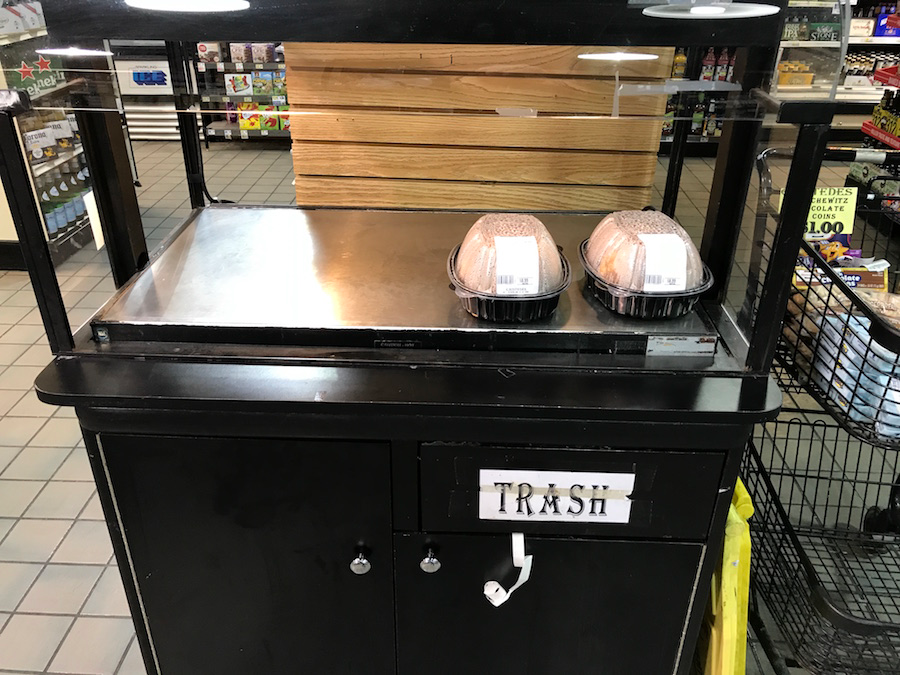- The US grocery sector is being disrupted as Lidl ramps up its store count in the US and Amazon takes market share with its acquisition of Whole Foods.
- We compared two stores in London and New York City to see how the shopping experience differed.
- We found a big difference in price, quality, and variety.
America’s grocery scene is in the midst of a major shake-up.
Last year, German discount store Lidl announced plans to expand in the US, and Amazon bought Whole Foods – both of which threatened to upend the US grocery market and send established national chains into aggressive price wars.
The grocery scene in New York City isn’t immune from these changes, not only because there are several Whole Foods stores in the city, but also because the absence of a major national chain like Walmart makes for a unique shopping experience.
We looked at how different it is to go grocery shopping in London versus New York. We disregarded Whole Foods, as it's known to be a more premium store, and instead looked at two stores where customers would typically do a shopping trip in their neighborhood.
In London, we chose Tesco, the largest supermarket chain in the UK, which occupies 27.8% of market share but is also considered to be a typical neighborhood store. It has five different store formats ranging from city convenience stores to large supermarkets in suburban areas. For this exercise, we visited one of its Express stores, which are under 3,000 square feet in size.
There's no direct equivalent to this in New York City, so we picked a smaller chain, Gristedes, which has 30 stores across the city.
Here's what we found out:
We visited a Tesco Express in London's Fulham neighborhood on a cold January morning. On first impression, the store looks easy to navigate with clearly labeled sections.
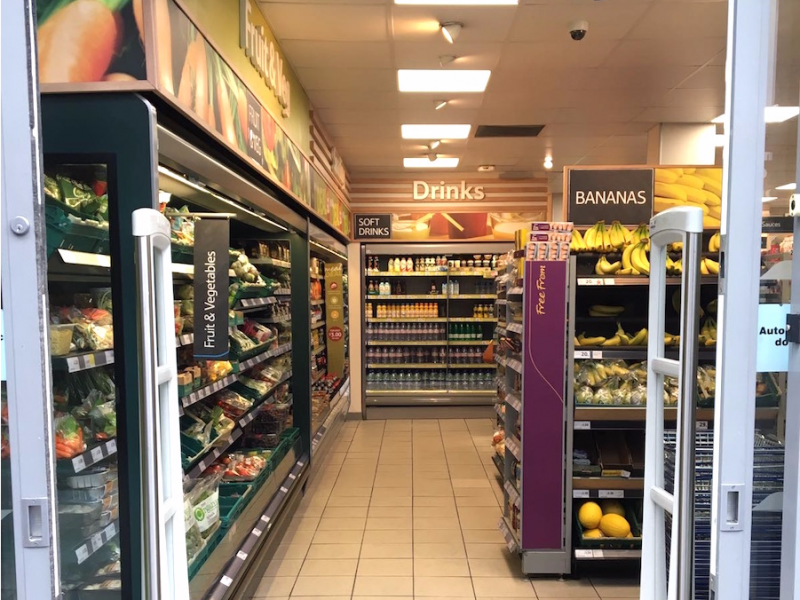
By the entrance, there's an attention-grabbing fresh produce area to lure customers in. "It's a way to immediately establish credibility and set a tone for the rest of the store," Mike Paglia, director of the retail insights firm Kantar Retail, told Business Insider. "You can pick up and feel an apple or smell an onion, but you can't do that with a pack of Cheerios, for example."

A similar tactic is used at the Gristedes store in Downtown Manhattan, though with a less nutritious approach. Fresh cakes and pies are displayed on a table near the entrance.
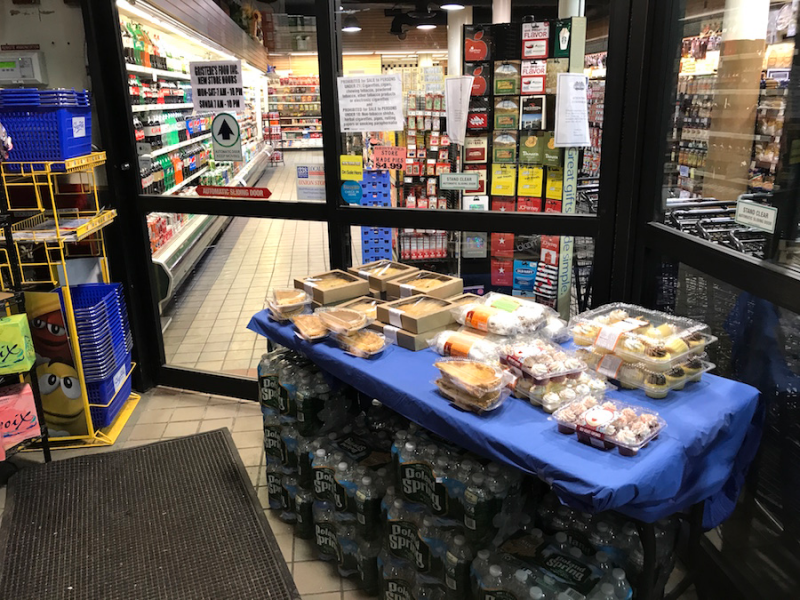
Then there's a strange twist — a rack of dated sunglasses is dropped right by the entrance. This is an unusual way to lure shoppers into the store in mid-January.
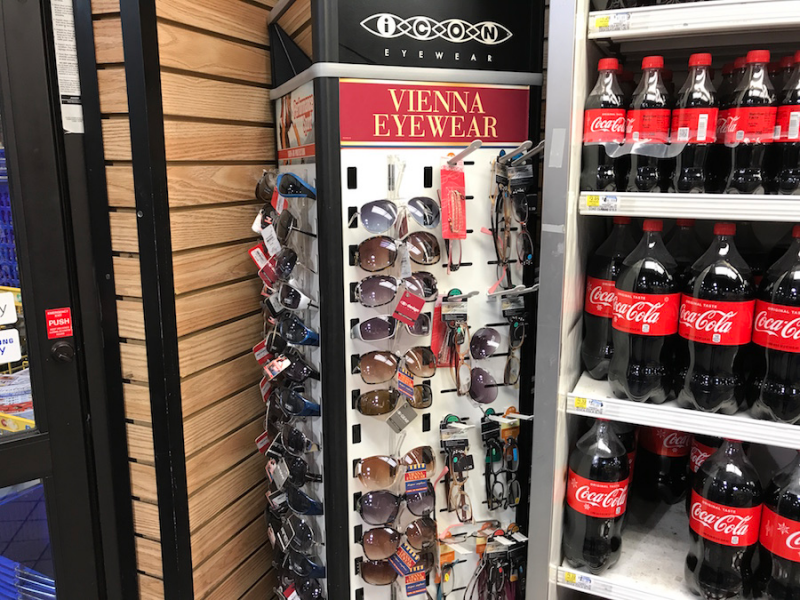
Instantly, there's less of a focus on healthy fresh food, as the near wall is covered with two-liter bottles of Coke.
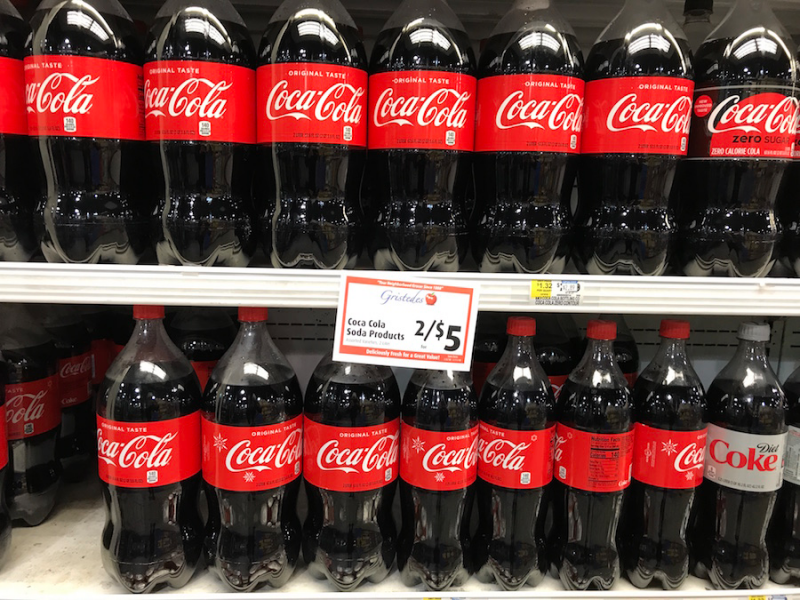
In fact, there's a ton of soda and soft drinks.
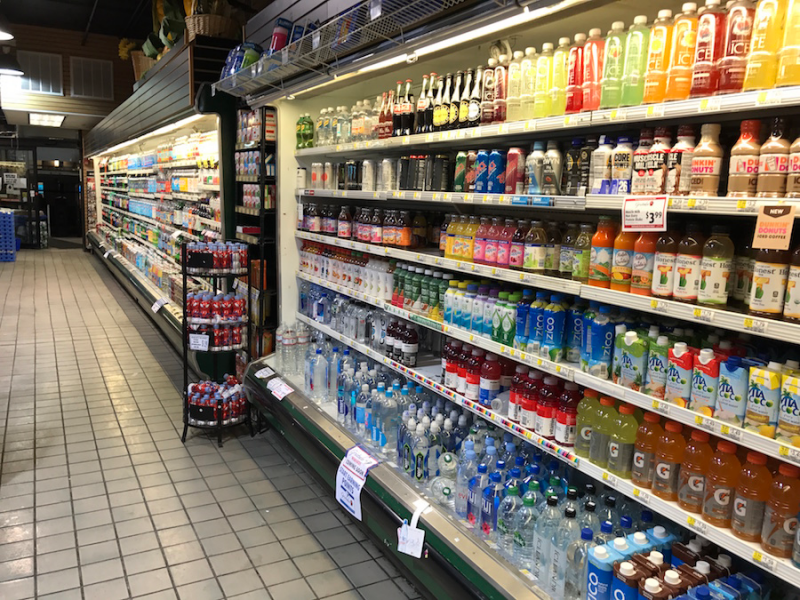
We find the fresh vegetable section tucked towards the back of the store. Glowing green, these unpackaged products look very fresh.
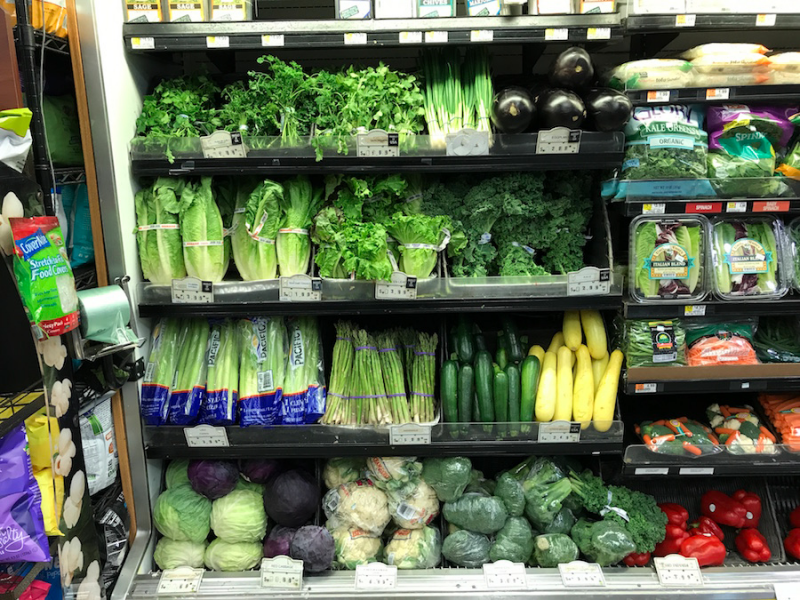
At Tesco, by contrast, the vegetables are covered in packaging. UK supermarkets have been criticized by customers for coating products in excessive amounts of plastic, leading to a request for "plastic-free aisles."
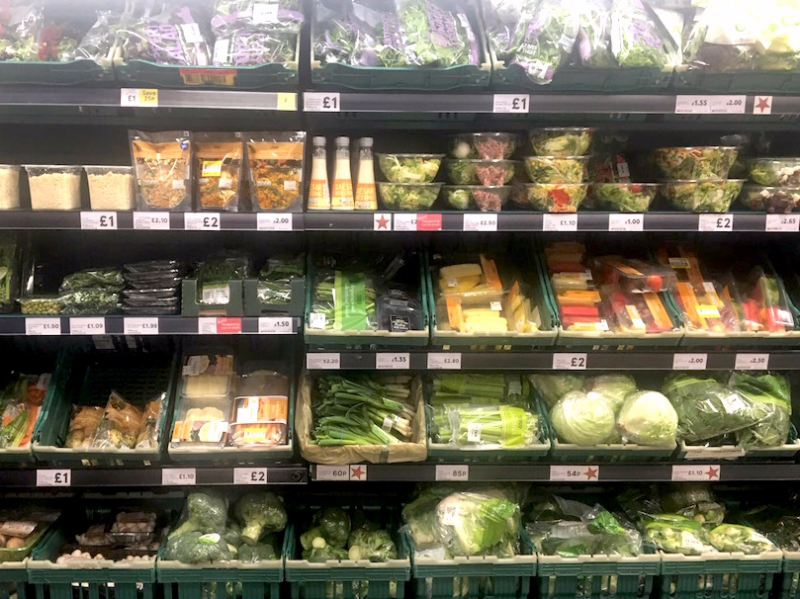
UK consumers have called for supermarkets to create plastic-free aisles because of pollution concerns. Tesco has launched initiatives to reduce plastic in its stores.
The fruit and vegetable section gives us our first glimpse into the mammoth price difference between the two stores.
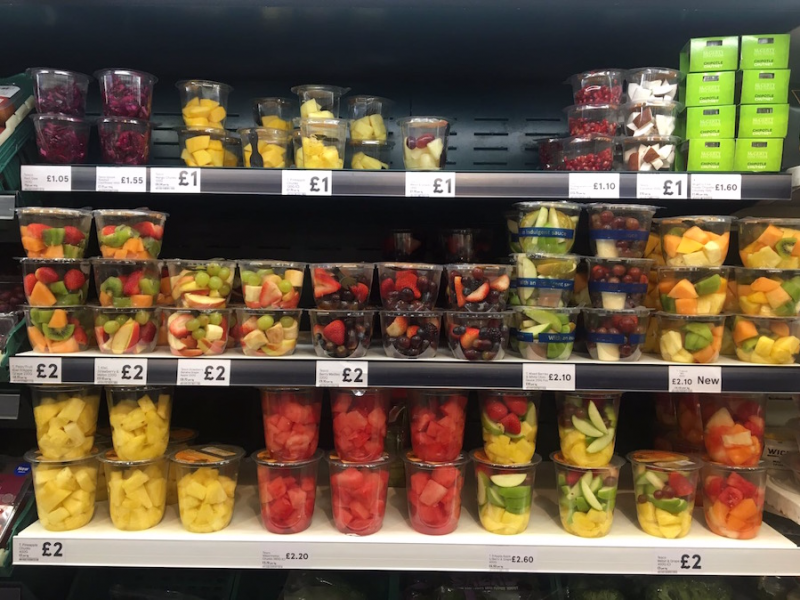
At Gristedes, you'll pay $5.99 for a case of raspberries (and this doesn't include New York city tax).

At Tesco, they're equivalent to $2.70 with VAT included.

Even American brands are cheaper in the UK. This bag of Doritos cost a whopping $4.29 at Gristedes and $1.35 at Tesco.

New Yorkers reportedly spend double the amount of money on basic groceries as Londoners, according to a CNBC report. High real estate costs in the city play a big part here, but the absence of a national brand means there's no pricing pressure in the market. "When Walmart (the US' biggest grocery chain) enters a market it compels them to drive prices down; no Walmart, no pressure to do that," Paglia told Business Insider.

Source: CNBC
The lack of private-label goods in these US grocery stores is another reason for higher prices. UK stores carry more private-label products. In the company's earnings call in October, Tesco CEO Dave Lewis said that private labels now account for 50% of sales at the chain.
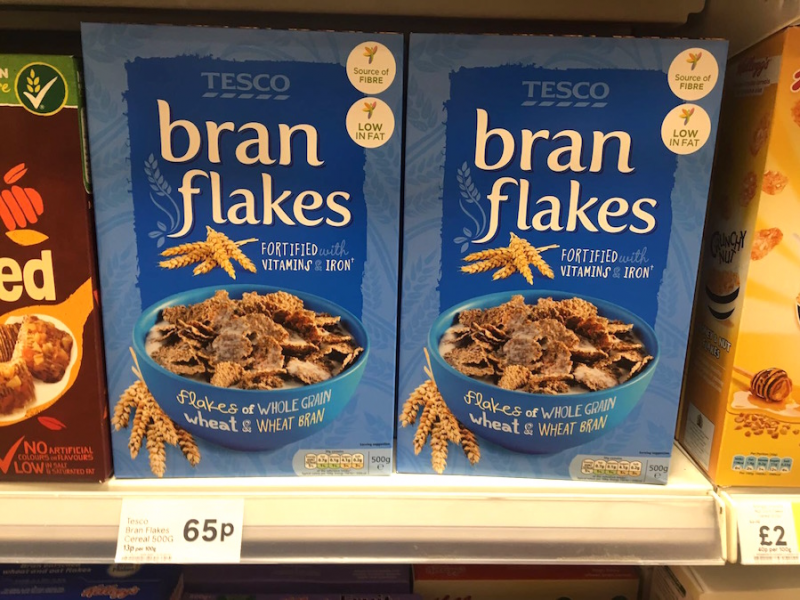
The cheapest cereal we could find at Gristedes was $3.39. At Tesco, it's under $1 for a private-label variety.
"Private label is a profit driver," Paglia told Business Insider. "There's still a lot of resistance towards it here in the US, and we lag behind the UK."
But pressure to drop grocery prices is mounting in the US as German chain Lidl heats up competition in the space.

In the US, retailers' private labels currently capture only a minority share of total grocery spending. Last year, these products accounted for 14.5% of all US spending on consumer packaged goods, according to a report done by Fung Global Retail Technology.
"The US grocery market is unusually fragmented, and fragmentation inhibits the development of sophisticated, tiered and innovative private-label ranges," according to Fung.
Fung predicts that total sales in the US generated by private-label discount stores such as Lidl could surge to $37.7 billion in 2020 as they rapidly expand.
While there's no real difference in the quality of staple products in each store — cereal, snacks, etc. — when it comes to meat, you'll have to fork out a lot more for quality at Gristedes. 1.1 pounds of Tesco's Finest beef mince, from its premium brand, costs just under $6.
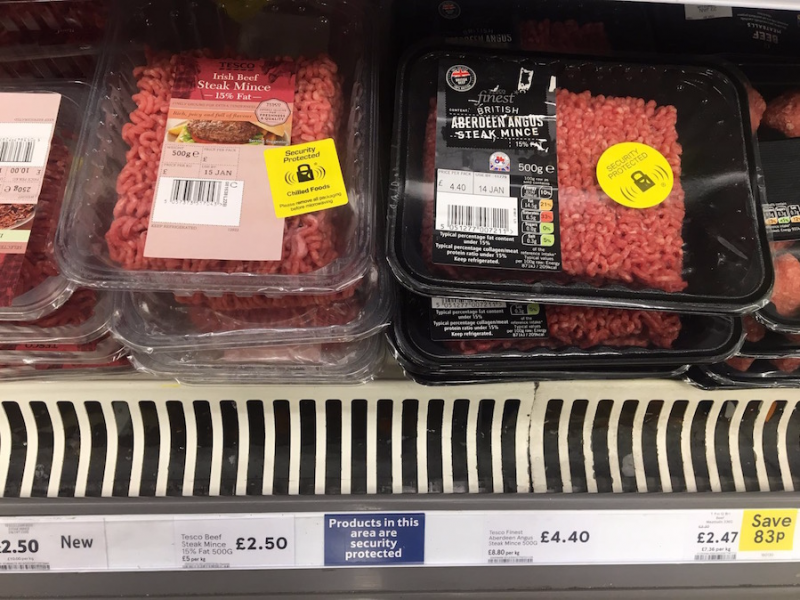
At Gristedes, 1.32 pounds of a similar own-brand product costs double at $12.

One of the best parts of Tesco is the smell of fresh bread wafting out of the door. In this location in London, there's a self-service coffee machine next to its bakery section for customers who are running in for a quick bite and a hot drink.
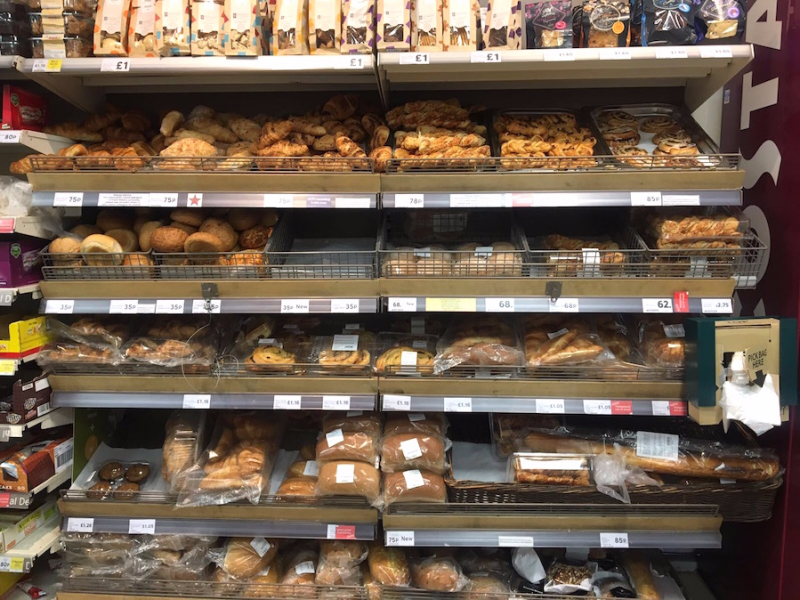
The bread section in Gristedes is hidden at the back of the store by the chilled products, squashing any chance of a tempting smell as you come in.

For both stores, convenience is key to cater to its urban customers. This Tesco "grab-and-go" section offers sandwiches, wraps, and salads for lunch.

There are affordable "meals deals," which cost around $4 for a drink, snack, and sandwich or salad.

There's a limited selection of prepared sandwiches at Gristedes. This depressing-looking "meal deal" including a sandwich, chips, and bottle of water costs $6.99.

In Tesco, there's a ton of gourmet, ready-made microwavable meals for one person. You can buy two for $5.40.
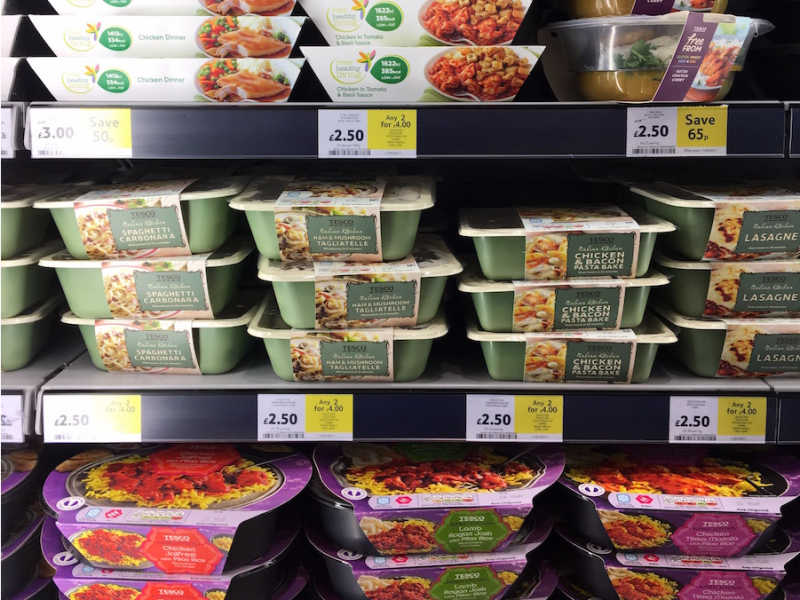
They look pretty tasty.

At Gristedes, there's far more frozen food to choose from — a whole aisle, in fact.

At both stores, we found an impressive selection of specialty foods for food allergies. There were also lots of different ingredients for other styles of cuisine.

In Tesco, there are even ready-made meals that cater to customers with allergies.

For two small stores, there's plenty of choice. At Gristedes, we found an entire aisle devoted to cleaning products and tissues ...

... which seems unnecessary for a store of this size.

It's especially apparent when you see how much space it devotes to other products.
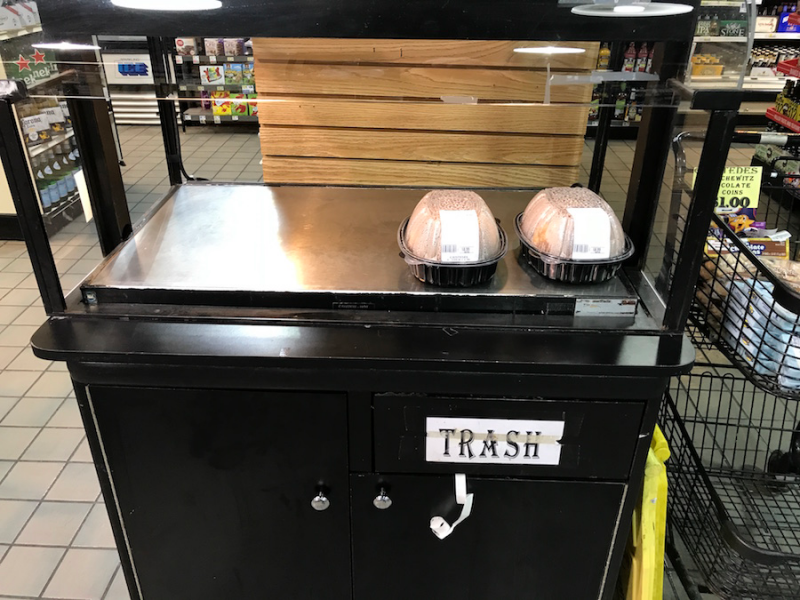
In Tesco, the focus is on the necessities. Shopping habits have changed in the UK as customers shift from doing a weekly shopping trip to "shopping for tonight; little and often," Natalie Berg, retail insights director at Planet Retail RNG, told Business Insider.
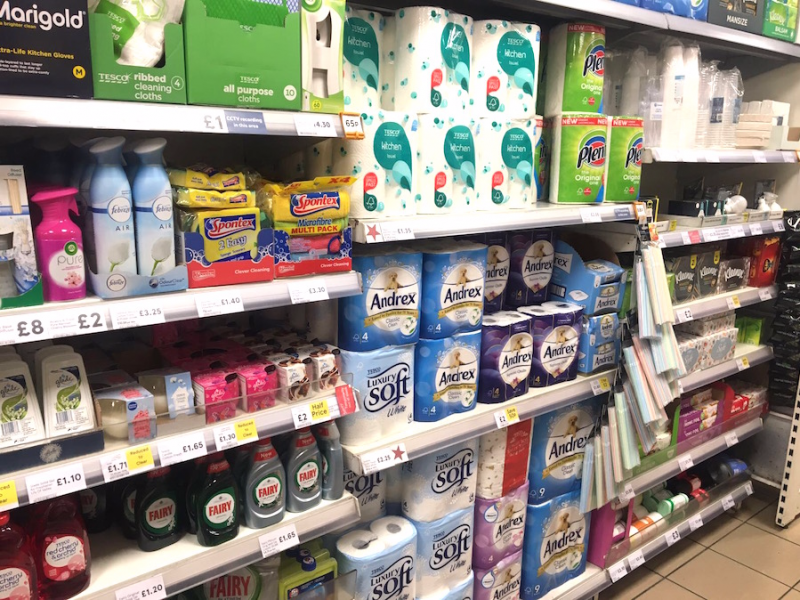
A report done by UK chain Waitrose showed that two-thirds of UK shoppers visit a supermarket more than once a day.
Then there's alcohol.
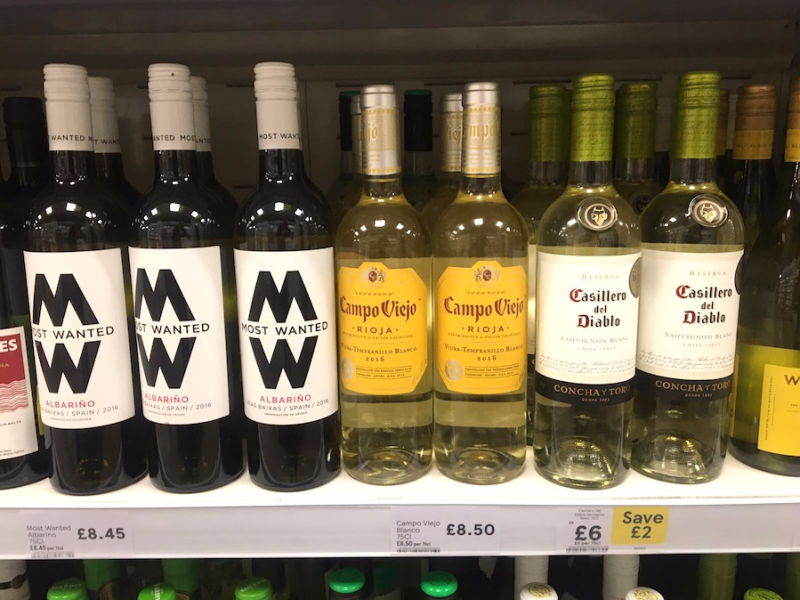
In Tesco, there's a wide selection of wine, beer, and spirits.
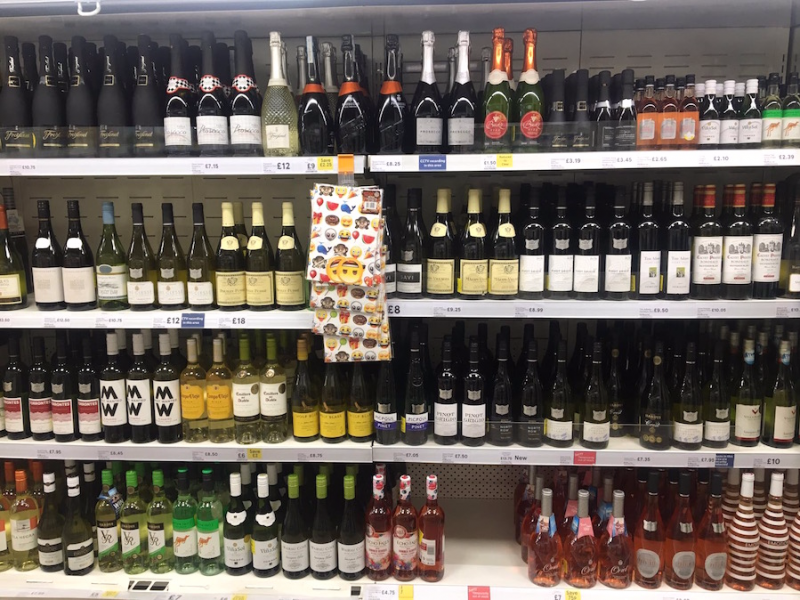
New York law prevents grocery stores from selling wine with alcohol content. There's often one brand available, Chateau Diana, which is produced exclusively for these stores because of its low alcohol content.
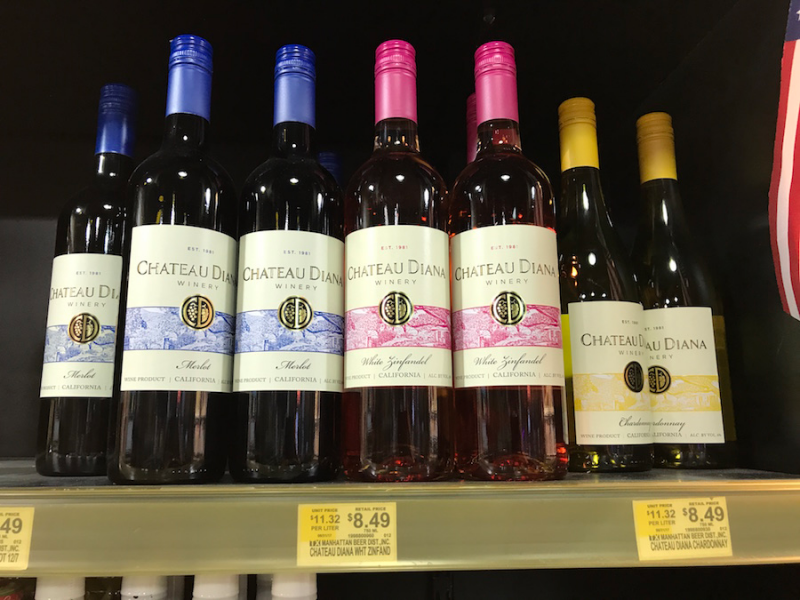
There's no shortage of beer; this is one of the store's best-stocked sections.

Overall, the shopping experience was definitely better in London based on price, quality, and ease of navigating the store. Supermarkets in the UK have already experienced the fierce competition of discount stores such as Lidl and Aldi, which has benefited customers as they are forced to reduce prices. The competition has also led to greater own-label innovation as it's a way for stores to boost profit margins and offer lower prices.

"British shoppers have the best-in-class experience," Berg told Business Insider.

